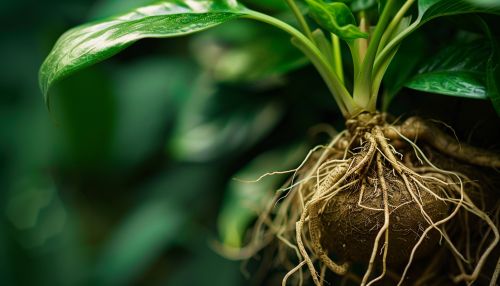Vascular plant
Introduction
Vascular plants, also known as tracheophytes, are a large group of plants that are defined by the presence of vascular tissues, xylem and phloem, which are used for the transportation of water and nutrients. These plants are characterized by a well-developed system of roots, stems, and leaves, and they reproduce through seeds or spores. The vascular system allows these plants to grow larger and live in a wider range of environments compared to non-vascular plants.
Classification and Diversity
Vascular plants are classified into two main groups: seed plants and non-seed plants. Seed plants, or spermatophytes, include gymnosperms and angiosperms, which produce seeds. Non-seed plants, or pteridophytes, include ferns, horsetails, and clubmosses, which produce spores.


Anatomy and Morphology
The anatomy of vascular plants is complex and varies widely among different species. However, all vascular plants share a common structure: the presence of vascular tissues, xylem and phloem.
Vascular Tissues
The xylem is responsible for the transport of water and minerals from the roots to the rest of the plant. It is composed of tracheids and vessel elements, which are dead at maturity and serve as water-conducting cells.
The phloem, on the other hand, transports sugars and other nutrients produced by the plant through photosynthesis from the leaves to the rest of the plant. It is composed of sieve-tube elements and companion cells, which are alive at maturity.
Roots
The roots of a vascular plant serve multiple functions. They anchor the plant to the ground, absorb water and nutrients from the soil, and store food. The two main types of root systems are the taproot system, common in dicotyledons, and the fibrous root system, common in monocotyledons.
Stems
The stems of vascular plants serve as the main structural support for the plant. They hold the leaves up to the sunlight, which is necessary for photosynthesis, and they also serve as conduits for water, nutrients, and sugars between the roots and the leaves.
Leaves
The leaves of vascular plants are the main site of photosynthesis. They are typically flat and thin to maximize the surface area for light absorption. The internal structure of a leaf is divided into the upper and lower epidermis, the mesophyll, and the vascular bundles.
Reproduction
Vascular plants reproduce through seeds or spores, depending on the group. Seed plants produce seeds, which are mature ovules containing an embryo. Non-seed plants produce spores, which are single cells that can develop into a new plant.
Evolution and Fossil Record
The first vascular plants appeared during the Silurian period, over 400 million years ago. These early vascular plants, such as the Rhyniophytes, did not produce seeds or leaves, but they had a simple vascular system. The evolution of seeds and leaves in later periods allowed vascular plants to colonize a wider range of environments and become the dominant group of land plants.
Ecological Role
Vascular plants play a crucial role in many ecosystems. They are the primary producers in most land ecosystems, converting sunlight into chemical energy through photosynthesis. They also provide habitat and food for a wide range of animals, and their roots help to prevent soil erosion.
Economic Importance
Vascular plants have significant economic importance. Many of the world's major crops, such as wheat, rice, and corn, are vascular plants. They also provide timber, medicine, and many other products. In addition, they play a crucial role in carbon sequestration, helping to mitigate climate change.
